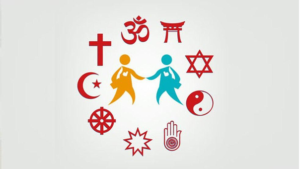Special Marriage Act, 1954
Context: Recently Actress Swara Bhasker got married through the Special Marriage Act, 1954.
What is the Special Marriage Act?
- The Special Marriage Act of 1954 (SMA) was passed by the Parliament in October 1954. It governs a civil marriage where the state sanctions the marriage rather than the religion.
- Issues of personal law such as marriage, divorce, adoption are governed by religious laws that are codified.
- These laws, such as the Muslim Marriage Act, 1954, and the Hindu Marriage Act, 1955, require either spouse to convert to the religion of the other before marriage.
- The SMA enables marriage between inter-faith or inter-caste couples without them giving up their religious identity or resorting to conversion.
- The Indian system, where both civil and religious marriages are recognised, is similar to the laws in the UK’s Marriage Act of 1949.
- An earlier version of the SMA was enacted in 1872 and was later re-enacted in 1954 with provisions for divorce etc.
Who can get married under the Special Marriage Act?
- The applicability of the Act extends to the people of all faiths, including Hindus, Muslims, Sikhs, Christians, Sikhs, Jains, and Buddhists, across India.
- Some customary restrictions such as parties not being within degrees of a prohibited relationship still apply to couples under SMA.
- Section 4 of the SMA requires that at the time of marriage, neither party has a spouse living or is incapable of giving a valid consent to it in consequence of unsoundness of mind.
- Even if both parties are capable of giving valid consent, it requires that they do not suffer from recurrent attacks of insanity or any mental disorder that renders them unfit for marriage and the procreation of children.
- The minimum age to get married under the SMA is 21 years for males and 18 years for females.
- However, once married as per the secular law, under Section 19 of the Act, any member of an undivided family who professes the Hindu, Buddhist, Sikh or Jain religion shall be deemed to effect their severance from the family.
- This would affect rights, including the right to inheritance, of the persons choosing to marry under the SMA.
What is the procedure for a civil marriage?
- As per Section 5 of the Act, the parties to the marriage are required to give a notice, in writing, to a “Marriage Officer” of the district in which at least one of the parties has resided for at least 30 days immediately preceding the notice.
- Before the marriage is solemnised, the parties and three witnesses are required to sign a declaration form before the Marriage Officer.
- Once the declaration is accepted, the parties will be given a Certificate of marriage which is essentially proof of the marriage or conclusive evidence of the fact that a marriage under this Act has been solemnised and that all formalities respecting the signatures of witnesses have been complied with.
What is the “notice period” under the SMA?
- As per Section 6, a true copy of the notice given by the parties will be kept under the “Marriage Notice Book” which will be open for inspection at all reasonable times, without a fee.
- Upon receiving the notice, the marriage officer shall publish it in “some conspicuous place in his office” to invite any objections to the marriage within 30 days.
- Section 7 deals with “Objection to marriage” and allows any person “before the expiration of thirty days from the date of the notice’s publication” to object to the marriage on the ground that it would contravene one or more of the conditions specified in Section 4 of the Act.
- If an objection has been made, the Marriage Officer cannot solemnise the marriage until he has inquired into the matter of the objection and is satisfied that will not prevent the marriage from taking place, unless the person making such an objection withdraws it.
Criticism
- These provisions are often criticised as they are commonly invoked to harass consenting couples.
- In 2009, the Delhi High Court, underlining the right to privacy, struck down the practice of posting the notice of intended marriage under the SMA to the residential addresses of both parties through the police station of concerned jurisdiction to verify their addresses.
- The unwarranted disclosure of matrimonial plans by two adults entitled to solemnise it may, in certain situations, jeopardise the marriage itself.
- In certain instances, it may even endanger the life or limb of one at the other party due to parental interference.
- In January 2021, the Allahabad High Court ruled that couples seeking to solemnise their marriage under the Special Marriage Act, 1954 can choose not to publish the mandatory 30-day notice of their intention to marry.
| Practice Question
|





